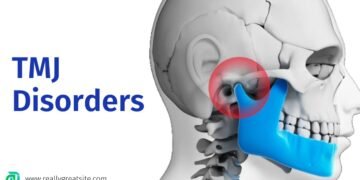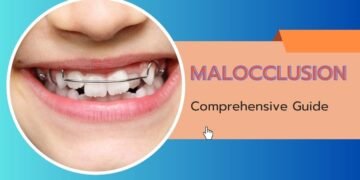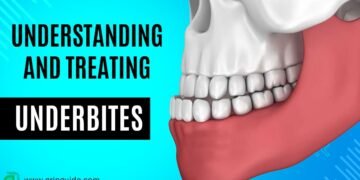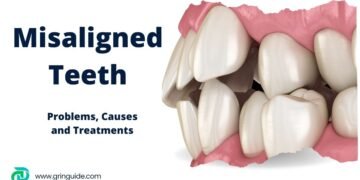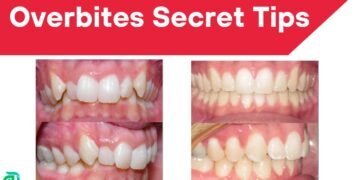Table of Contents
Introduction: Definition of Dental Braces
Dental braces, an integral component of orthodontic treatments, are specialized devices used to correct misaligned teeth and jaws. By applying continuous pressure over a period of time, braces gradually move teeth into their desired positions, thereby improving both dental health and aesthetics.
The primary purpose of dental braces is to align and straighten teeth, ensuring a functional bite, optimal oral health, and an enhanced smile.
Braces typically consist of several key components: brackets, wires, and bands. Brackets are small, square-shaped attachments that are bonded to the front of each tooth. They act as anchors for the braces and are commonly made from metal, ceramic, or a combination of materials.
Archwires are thin, metal wires that connect the brackets and guide the movement of teeth. These wires are periodically adjusted by an orthodontist to ensure the teeth are moving in the correct direction. Bands are elastic rings that hold the archwires in place on the brackets, ensuring the braces function effectively.
The application of braces is a meticulous process that requires the expertise of an orthodontist. Each component works in tandem to exert controlled forces on the teeth, gradually shifting them into proper alignment.
This not only enhances the overall appearance of the smile but also addresses issues such as overcrowding, gaps, overbites, underbites, and crossbites. By correcting these dental irregularities, braces play a crucial role in preventing future oral health problems, such as tooth decay, gum disease, and jaw pain.
As we delve deeper into the world of dental braces, it is essential to understand their fundamental role in orthodontic treatments. The following sections will explore the history, various types, and the importance of braces, providing a comprehensive overview of this transformative dental solution.
Brief History of Orthodontic Braces
The history of orthodontic braces can be traced back to ancient civilizations, where early attempts at tooth alignment were made using rudimentary methods. In ancient Egypt, for instance, mummies have been discovered with metal bands wrapped around their teeth, suggesting an early form of dental braces.
Similarly, ancient Romans used finger pressure and gold wire to correct dental imperfections, indicating a rudimentary understanding of orthodontic principles.

The development of modern orthodontics began in the 18th century, marked by the pioneering work of French dentist Pierre Fauchard. Often referred to as the “father of modern dentistry,” Fauchard introduced the concept of using a “bandeau,” a horseshoe-shaped piece of iron, to expand the dental arch and correct teeth alignment. His innovative approach laid the groundwork for future advancements in the field.
The 19th century saw significant progress with the contributions of American dentist Edward H. Angle, who is considered the “father of modern orthodontics.” Angle developed the first classification system for malocclusions, which remains a cornerstone of orthodontic diagnosis today. His invention of the “edgewise appliance” in 1925 revolutionized the field, allowing for more precise control over tooth movement.
Advancements in materials and techniques continued into the 20th and 21st centuries, transforming dental braces into the sophisticated devices we know today. The introduction of stainless steel in the 1950s provided a durable and effective material for braces, while the advent of adhesive bonding techniques in the 1970s eliminated the need for metal bands around every tooth. More recently, the development of clear aligners and lingual braces has offered patients more aesthetic options, reflecting a growing emphasis on both functionality and appearance.
Understanding the historical context of dental braces highlights the remarkable journey from ancient attempts at tooth alignment to the advanced orthodontic solutions available today. This evolution underscores the continuous quest for improved dental health and aesthetics, making modern orthodontic treatment accessible and effective for a wide range of patients.
Overview of the Importance of Braces in Dental Health
Braces play a vital role in maintaining and enhancing dental health. One of the primary functions of dental braces is to correct misaligned teeth, a condition known as malocclusion. Misaligned teeth can lead to a variety of dental health issues, including difficulty in cleaning teeth, which may result in plaque buildup, tooth decay, and gum disease. By aligning the teeth properly, braces help in maintaining better oral hygiene, thereby reducing the risk of these common dental problems.
In addition to improving dental hygiene, braces are instrumental in correcting bite issues. Malocclusion can cause improper bites, leading to problems such as jaw pain, difficulty in chewing, and excessive wear on certain teeth. By realigning the teeth and adjusting the bite, braces help in alleviating these issues, contributing to overall oral health. Properly aligned teeth and a correct bite also ensure an even distribution of force during chewing, which can prevent unnecessary strain on the jaw and teeth.
Beyond the health benefits, braces offer significant aesthetic advantages. A well-aligned set of teeth can dramatically enhance the appearance of one’s smile, which is a crucial aspect of personal confidence and self-esteem. The psychological impact of having straight, well-aligned teeth should not be underestimated. Individuals who have undergone orthodontic treatment often report higher levels of confidence and a positive self-image, stemming from the improved appearance of their smile.
In essence, the importance of orthodontic braces extends beyond mere cosmetic improvement. They provide critical benefits in terms of dental hygiene, bite correction, and overall oral health. Additionally, the aesthetic and psychological benefits contribute to an individual’s overall well-being. Thus, orthodontic braces are a comprehensive solution addressing both health-related and aesthetic concerns, underscoring their multifaceted importance in dental care.
Types of Braces
In the realm of orthodontics, a variety of dental braces are available to cater to different needs and preferences. Understanding these options is crucial for making an informed decision about dental treatment. Here, we delve into the types of braces: traditional metal braces, ceramic braces, lingual braces, and clear aligners such as Invisalign.
Traditional Metal Braces
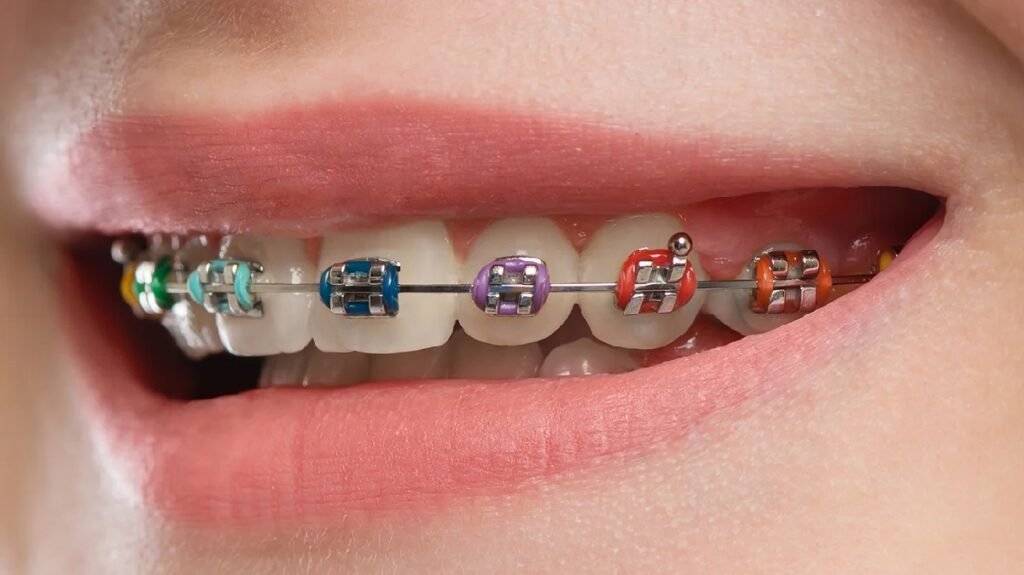
These are the most common and recognizable type of dental braces. Composed of high-grade stainless steel, traditional metal braces consist of brackets attached to each tooth and interconnected with a metal wire.
The wire is periodically tightened to gradually shift the teeth into their correct positions. Typical treatment duration ranges from 18 months to 3 years. The primary advantages include their durability and effectiveness in treating severe misalignments. However, the metal appearance and potential for discomfort can be perceived as drawbacks.
Ceramic Braces
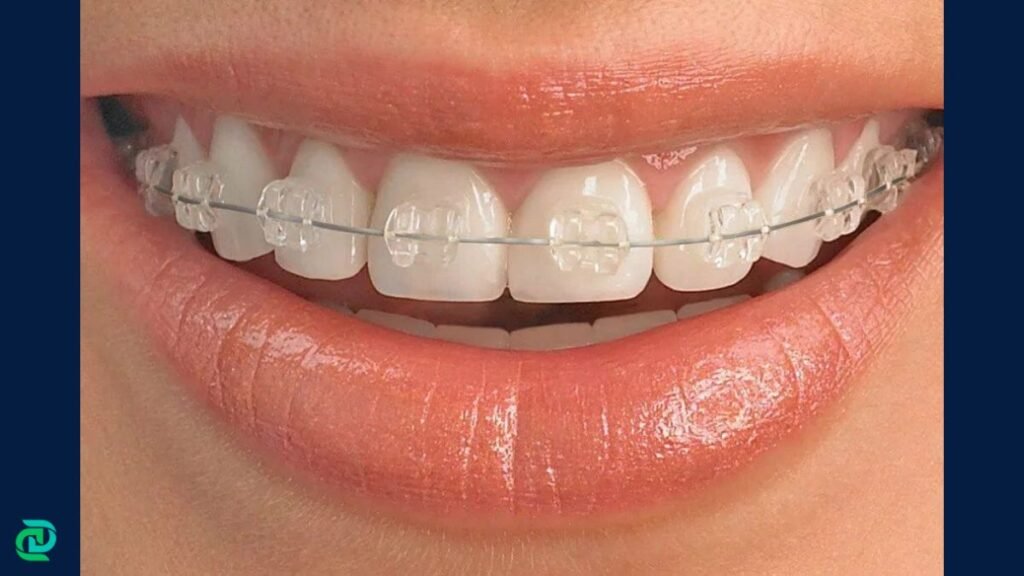
Ceramic braces function similarly to traditional metal braces but use clear or tooth-colored brackets that blend with the teeth. These braces are less noticeable, making them a popular choice among adults and older teenagers.
The materials used, typically ceramic composites, offer a more aesthetically pleasing option. Treatment duration is generally similar to metal braces, around 18 months to 3 years. The main disadvantage is their susceptibility to staining and slightly higher fragility compared to metal braces.
Lingual Braces

Lingual braces are unique because they are attached to the back of the teeth, making them invisible from the front. They provide the benefits of traditional braces without the visible metal brackets.
The materials used are similar to those in traditional braces, but the placement requires specialized skills and expertise. Treatment duration can be comparable to other braces, but the adjustment period might be longer due to their position. The main drawback is that they can be more challenging to clean and may cause initial discomfort to the tongue.
Clear Aligners (Invisalign)

Clear aligners such as Invisalign have gained popularity for their nearly invisible appearance and removable nature. Made from BPA-free plastic, these custom-fitted trays are replaced every few weeks to gradually move the teeth. Treatment duration varies but generally ranges from 6 to 18 months, depending on the severity of the misalignment.
The advantages include comfort, convenience, and the ability to maintain oral hygiene easily. However, they may not be suitable for severe orthodontic cases and require strict compliance to be effective.
Each type of dental brace offers distinct advantages and considerations. By understanding these differences, individuals can work with their orthodontist to select the most appropriate treatment for their unique needs.
How Braces Work: The Mechanics of Tooth Movement
The science behind dental braces is both fascinating and intricate. At its core, the process involves the application of continuous pressure to teeth, enabling them to move gradually into their desired positions. This pressure is generated by a combination of brackets, wires, and bands, each playing a crucial role in orthodontic treatment.
Brackets are small, square-shaped attachments that are bonded directly to the front of each tooth. They act as handles, holding the archwire in place. The archwire, which runs through the brackets, is the component responsible for exerting the necessary pressure on the teeth. Made from materials such as stainless steel or nickel-titanium, the archwire is designed to maintain its shape while steadily pushing or pulling the teeth into alignment.
Elastic bands, also known as ligatures, are used to secure the archwire to the brackets. These bands can vary in color and are replaced periodically during orthodontic adjustments. Another type of band, known as interarch rubber bands, may be used to correct the alignment of the upper and lower jaws by connecting brackets on the upper and lower teeth.
The continuous pressure applied by the braces triggers a biological process called bone remodeling. As pressure is exerted on a tooth, the bone on one side of the tooth’s root compresses, causing osteoclasts to break down the bone tissue. On the opposite side, where tension is felt, osteoblasts form new bone tissue. This coordinated activity allows the tooth to gradually move through the bone and settle into its new position.
Understanding the mechanics of how braces work provides valuable insight into the effectiveness of orthodontic treatment. By harnessing the body’s natural ability to remodel bone, dental braces can achieve significant improvements in tooth alignment, leading to enhanced oral health and aesthetics.
Dental braces are a complex system of components working in unison to achieve precise orthodontic outcomes. Among the key elements are brackets, wires, and bands, each playing a critical role in the treatment process. Brackets, typically made from metal or ceramic, are bonded directly to the teeth. They serve as anchor points for the orthodontic wires. The positioning of these brackets is meticulously planned to ensure the correct direction and amount of force is applied to each tooth, facilitating optimal movement and alignment.
Orthodontic wires, also known as archwires, are threaded through the brackets and serve as the main guiding force in tooth movement. These wires are often made from stainless steel or nickel-titanium, materials known for their strength and flexibility. The archwires exert continuous pressure on the teeth, gradually guiding them into their desired positions. As treatment progresses, orthodontists may replace or adjust these wires to maintain consistent force and direction, ensuring that the teeth move according to the treatment plan.
Bands, or orthodontic bands, are another essential component, providing additional anchorage. Made from stainless steel, these bands are usually placed around the back molars. They help distribute the pressure exerted by the wires more evenly and enhance the stability of the entire braces system. In some cases, bands can also be used to anchor other orthodontic appliances, such as headgear or elastics, which further assist in correcting bite issues and achieving better alignment.
The interplay of brackets, wires, and bands in dental braces is crucial for achieving the desired orthodontic results. Each component has a specific role, and their combined effort ensures that teeth move efficiently and effectively into their proper positions. Understanding the function of these elements provides valuable insight into the intricate process of orthodontic treatment and underscores the importance of each part in the success of dental braces.
The Biological Process of Bone Remodeling During Orthodontic Treatment
Dental braces play a critical role in orthodontic treatment by gradually realigning teeth through the process of bone remodeling. This biological mechanism involves the intricate balance between bone resorption and bone formation, facilitated by specific cellular activities. When braces apply consistent pressure to the teeth, it triggers a response in the periodontal ligament and the surrounding alveolar bone, initiating the bone remodeling process.
The process begins with the application of force by the braces, which creates pressure on one side of the tooth and tension on the opposite side. This pressure stimulates the activity of osteoclasts, the cells responsible for bone resorption. Osteoclasts break down the bone tissue on the pressure side, allowing the tooth to move into the newly created space. Concurrently, on the tension side, osteoblasts are activated. These cells are essential for bone formation as they deposit new bone material, reinforcing the area and stabilizing the tooth in its new position.
Several factors influence the rate and effectiveness of tooth movement during orthodontic treatment. Age is a significant factor; younger patients typically experience faster bone remodeling due to higher metabolic activity. The type and duration of force applied by the braces also play crucial roles. Gentle, continuous forces are more effective and result in fewer complications compared to intermittent or excessive forces, which can damage the surrounding tissues. Additionally, individual variations in biological response and overall health can affect treatment outcomes.
Understanding the biological process of bone remodeling provides valuable insight into the science behind dental braces. It underscores the importance of precise and controlled force application to achieve optimal orthodontic results while minimizing potential adverse effects. This knowledge emphasizes the need for professional supervision and customized treatment plans to ensure effective and safe tooth realignment.
Who Needs Braces? Common Dental Issues and Indications
Dental braces are a pivotal solution for various orthodontic problems, addressing a range of dental issues that affect both functionality and aesthetics. One of the most prevalent issues corrected by braces is overcrowding, where there is insufficient space in the jaw for all teeth to fit normally. This condition can lead to overlapping teeth, making cleaning difficult and increasing the risk of tooth decay and gum disease. Additionally, gaps between teeth, or diastemas, are effectively closed using braces, providing a more uniform and visually appealing smile.
Malocclusions, or misalignments of the teeth, are another primary indication for braces. Overbites and underbites, where the upper teeth excessively overlap the lower teeth or vice versa, can cause significant wear on the teeth and lead to jaw pain. Crossbites, where some upper teeth sit inside the lower teeth when the mouth is closed, can also be rectified with dental braces, preventing potential issues such as asymmetrical jaw growth and uneven tooth wear.
There are several signs that might indicate the need for braces. Difficulty chewing or biting food, speech impediments, and noticeable misalignment of the teeth are common indicators. Chronic mouth breathing, frequent biting of the cheek or roof of the mouth, and an inability to close the lips comfortably are additional symptoms that should prompt a consultation with an orthodontist.
The ideal age for starting orthodontic treatment is typically between 10 and 14 years old, as this is when the mouth and jaw are still growing and can be more easily adjusted. However, braces are not just for children and teenagers; adults can also successfully undergo orthodontic treatment. Early intervention can prevent more severe dental issues later on, but advancements in orthodontics have made it possible to achieve effective results at any age.
Initial Consultation and Diagnosis
The journey towards achieving a healthier and more aligned smile with dental braces begins with an initial consultation with an orthodontist. This crucial first step sets the foundation for a successful treatment plan tailored to your unique dental needs. During this appointment, the orthodontist will conduct a comprehensive examination of your teeth, jaws, and facial structure to assess the overall dental health and identify any issues that require correction.
One of the key components of the initial consultation is the thorough examination of your mouth. The orthodontist will meticulously check the alignment of your teeth, the spacing between them, and how your upper and lower jaws fit together. This physical examination provides a clear picture of any misalignments, overcrowding, or bite issues that need to be addressed.
To gain a more detailed understanding of your dental condition, the orthodontist will utilize advanced diagnostic tools such as X-rays, photographs, and teeth impressions. X-rays offer a comprehensive view of the underlying bone structure and the position of the teeth, revealing any hidden issues that may not be visible during the physical examination. Photographs of your face and teeth help in tracking the progress throughout the treatment, while impressions or digital scans create accurate models of your teeth, aiding in the precise planning of your braces.
Based on the findings from these examinations and diagnostic tools, the orthodontist will diagnose any existing dental issues, such as malocclusions (misaligned bites), overcrowded teeth, or gaps between teeth. With this diagnosis in hand, the orthodontist can then develop a customized treatment plan designed to address your specific needs. This plan will outline the type of dental braces best suited for you, the expected duration of the treatment, and any additional procedures that may be required.
Understanding what to expect during the initial consultation and diagnosis phase can help alleviate any concerns and prepare you for the journey ahead. This foundational step ensures that your treatment with dental braces starts on the right track, paving the way for a successful and rewarding outcome.
Preparation for Braces
Preparing for dental braces involves several crucial steps, each designed to ensure the treatment’s effectiveness and your overall oral health. One of the initial steps often includes a comprehensive dental examination. During this evaluation, your orthodontist may identify the need for preliminary treatments such as tooth extractions or fillings. Removing any problematic teeth or addressing cavities beforehand can pave the way for a smoother braces journey.
Maintaining optimal oral hygiene is paramount before getting braces. Excellent dental care practices, such as regular brushing and flossing, help mitigate the risk of gum disease and cavities, which can complicate orthodontic treatment. Your dentist might recommend a thorough cleaning before the braces are put on to eliminate plaque and tartar buildup, thus providing a clean slate for the orthodontic process.
Adapting to some lifestyle changes can also be beneficial. For instance, you may need to avoid certain foods that can damage braces, such as hard candies, sticky sweets, and crunchy snacks. Additionally, integrating a diet rich in softer foods can help ease the transition. It’s also advisable to steer clear of habits like nail-biting or chewing on pens, which could potentially harm the braces.
Mental preparation is equally important. Understanding that the initial days of wearing dental braces might come with some discomfort can help set realistic expectations. Communicating with others who have gone through the process can provide invaluable insights and support. Moreover, visualizing the long-term benefits, such as improved dental health and a better smile, can bolster your motivation and commitment throughout the treatment period.
By taking these preparatory steps, you can not only enhance the effectiveness of your orthodontic treatment but also ensure a smoother and more manageable experience. Proper preparation sets the foundation for a successful journey towards achieving a healthier, beautifully aligned smile.
The Procedure of Fitting Braces
The process of fitting dental braces is a meticulous one, designed to ensure optimal results for each individual patient. Initially, an orthodontist conducts a detailed assessment to determine the most appropriate type of braces. Options include metal braces, which are the most common and cost-effective; ceramic braces, which are less visible due to their tooth-colored appearance; lingual braces, placed on the backside of the teeth; and clear aligners, such as Invisalign, which are virtually invisible and removable.
Once the type of braces is selected, the fitting process begins. The first step involves thoroughly cleaning and drying the teeth. The orthodontist then applies a special adhesive to the surface of the teeth, followed by attaching the brackets. These brackets serve as anchors for the archwires, which guide the teeth into correct alignment over time. The archwires are then threaded through the brackets and secured with elastic bands, which come in various colors for customization.
The entire fitting procedure typically takes between one to two hours. While it is generally pain-free, patients may experience some discomfort due to the pressure exerted by the braces. This discomfort is usually temporary and can be managed with over-the-counter pain relievers if necessary.
Immediately following the fitting, patients might notice an increased sensitivity and a slight soreness in the teeth and gums. Soft foods and a careful oral hygiene routine can help alleviate these initial symptoms. The orthodontist will provide detailed aftercare instructions and schedule follow-up appointments to monitor progress and make any necessary adjustments.
Understanding the procedure of fitting braces can help alleviate any apprehensions and ensure a smoother experience. Whether opting for traditional metal braces, discreet ceramic options, or modern clear aligners, each type is designed to work effectively to achieve a beautiful, aligned smile.
Follow-up Adjustments and Care
Once dental braces have been fitted, follow-up appointments are crucial for ensuring that the treatment progresses as planned. These regular visits, typically scheduled every 4 to 6 weeks, allow the orthodontist to monitor the movement of the teeth and make necessary adjustments. During these appointments, the orthodontist might tighten or replace the wires and bands. This process ensures that the braces continue to exert the appropriate pressure on the teeth, guiding them into their correct positions over time.
Adjustments are an integral part of the orthodontic treatment. The wires, also known as archwires, are designed to apply steady pressure on the teeth. Over time, this pressure can lessen as the teeth move, necessitating the need for tightening or replacing the wires. Additionally, elastic bands, which help in correcting bite issues, may need to be changed to maintain their effectiveness.
Regular check-ups serve several purposes. They allow the orthodontist to track progress, detect any potential issues early, and ensure the braces are functioning optimally. These visits are also an opportunity for patients to ask questions and receive guidance on proper care of their braces. Effective maintenance includes brushing and flossing around the brackets and wires, avoiding certain foods that can damage the braces, and using orthodontic wax to alleviate irritation.
Managing discomfort after adjustments is a common concern. Patients might experience some soreness or sensitivity in their teeth and gums following an appointment. This discomfort is usually temporary and can be managed with over-the-counter pain relievers, soft foods, and saltwater rinses. Adhering to the orthodontist’s recommendations and maintaining a good oral hygiene routine can significantly alleviate these issues.
In summary, follow-up adjustments and care are pivotal in the success of orthodontic treatment with dental braces. Regular visits ensure that the braces are working effectively, and proper maintenance helps in achieving the desired outcomes with minimal discomfort. Through consistent monitoring and adjustments, patients can look forward to a successful and smooth journey towards a healthier smile.
Life with Braces: Daily Maintenance and Oral Hygiene
Adapting to life with dental braces requires a commitment to maintaining excellent oral hygiene. Proper daily maintenance is crucial not only for the health of your teeth and gums but also for ensuring the effectiveness of the braces themselves. Establishing a thorough brushing and flossing routine is paramount. Brushing should be done at least twice a day, ideally after every meal. Using a soft-bristled toothbrush, angle the brush at a 45-degree angle toward the gumline and brush in a circular motion. Pay extra attention to the brackets and wires, as food particles can easily become trapped, leading to plaque buildup.
Flossing with braces can be challenging but remains essential. Traditional floss can be difficult to navigate around wires and brackets, making floss threaders an invaluable tool. These threaders help guide the floss between teeth and under the wires, ensuring thorough cleaning. Another highly recommended tool is the interdental brush, which is designed to clean small spaces between teeth and around brackets effectively. Using an interdental brush in addition to regular flossing can help remove debris and prevent plaque accumulation.
To keep both your braces and teeth in optimal condition, consider using an antibacterial mouthwash. This can help reduce the risk of cavities and gum disease by killing bacteria that brushing and flossing might miss. Additionally, regular dental check-ups are essential. Your orthodontist will monitor the progress of your braces and make necessary adjustments, while your dentist can perform professional cleanings to address areas that are difficult to clean with braces.
Avoiding certain foods can also make a significant difference in maintaining your braces. Hard, sticky, and sugary foods can damage the wires and brackets, and contribute to tooth decay. Opt for softer foods and cut them into smaller pieces to make chewing easier and reduce the risk of damaging your braces.
By adhering to these daily maintenance routines and utilizing the appropriate orthodontic tools, you can ensure that your journey with dental braces is as smooth and effective as possible, paving the way to a healthy, well-aligned smile.
Dietary Recommendations
Adapting your diet is a crucial aspect of managing dental braces effectively. Certain foods can pose risks to braces, potentially causing damage or complicating oral hygiene. To ensure the best results from your orthodontic treatment, it’s essential to follow specific dietary guidelines.
Firstly, individuals with braces should avoid sticky foods such as caramel, chewing gum, and gummy candies. These items can cling to braces and wires, making them difficult to clean and increasing the risk of tooth decay. Hard foods like nuts, popcorn, and hard candies should also be avoided, as they can break brackets and wires, leading to additional orthodontic appointments and delays in treatment progress. Sugary foods and beverages, such as sodas and sweets, should be limited due to their potential to cause cavities and plaque buildup around the braces.
Instead, opt for braces-friendly alternatives that are easier to chew and less likely to damage orthodontic appliances. Soft fruits like bananas, berries, and grapes are excellent choices. Cooked vegetables, dairy products, and soft grains such as pasta and rice are also suitable options. Protein sources like tofu, fish, and tender cuts of meat can be incorporated into meals without posing a risk to braces.
The impact of diet on the effectiveness of braces cannot be overstated. A balanced diet rich in vitamins and minerals supports overall oral health, promoting gum health and reducing the risk of inflammation. Consuming foods high in calcium, such as milk, cheese, and yogurt, strengthens tooth enamel, making teeth more resilient during the realignment process.
To eat comfortably and safely with braces, cut food into smaller, manageable pieces and chew slowly to avoid dislodging brackets or bending wires. Using orthodontic wax can provide relief from irritation caused by braces, making eating more comfortable. Additionally, maintaining a thorough oral hygiene routine, including regular brushing and flossing, ensures that food particles do not linger around braces, reducing the risk of dental issues.
Managing Discomfort and Common Issues
Undergoing orthodontic treatment with dental braces often brings about a range of discomforts and common issues, which are essential to manage effectively to ensure a smoother journey towards achieving a perfect smile. Initially, it is not uncommon to experience soreness or tenderness in the mouth as the teeth begin to shift. This discomfort typically subsides within a week. Over-the-counter pain relievers, such as ibuprofen or acetaminophen, can be helpful in mitigating this pain.
Another frequent issue is irritation from the braces themselves. The brackets and wires can sometimes rub against the inner cheeks and lips, leading to sore spots. Applying orthodontic wax on the brackets can provide a protective barrier, reducing friction and preventing sores. Additionally, rinsing the mouth with a warm saltwater solution can promote healing and soothe irritated areas.
Loose brackets or wires can also occur and need to be addressed promptly. If a bracket becomes loose, it is advisable to contact your orthodontist as soon as possible for a repair. In the meantime, orthodontic wax can be used to secure the bracket temporarily. For protruding wires that may cause discomfort, the end of the wire can be gently pushed back with a clean cotton swab or the eraser end of a pencil. If the wire causes significant pain, using orthodontic wax to cover the sharp end can provide temporary relief until a visit to the orthodontist.
It’s important to know when to seek professional help. While minor issues can often be managed at home, certain situations require immediate attention from an orthodontist. Severe pain, significant swelling, or any signs of infection should not be ignored and warrant an urgent consultation. Regular check-ups and open communication with your orthodontist will help in addressing any concerns promptly and effectively.
By understanding and managing these common issues, you can ensure a more comfortable experience with dental braces, paving the way for successful orthodontic treatment and optimal results.
Duration of Treatment and Factors Affecting It
The duration of dental braces treatment can vary considerably, influenced by several key factors. Typically, braces are worn for an average of 18 to 24 months, although some cases may require shorter or longer periods. The severity of dental issues plays a significant role in determining the treatment length. For instance, minor alignment problems may be corrected within a year, while more complex cases involving significant malocclusion or jaw misalignment may necessitate a longer duration.
Age is another critical factor affecting the timeline for braces. Younger patients, particularly adolescents, often experience faster results due to their still-developing jawbones and teeth, which can be more easily guided into the desired position. Conversely, adults may find that their treatment takes slightly longer due to denser bone structures and the potential for more established dental issues.
The type of braces chosen also impacts the treatment duration. Traditional metal braces, while highly effective, may require a typical treatment period. On the other hand, newer options such as clear aligners or ceramic braces might offer more discreet solutions but can sometimes extend the treatment period depending on the specific requirements of the patient’s dental issues.
Patient compliance is a crucial determinant in the success and duration of braces treatment. Following the orthodontist’s instructions meticulously can significantly influence the timeline. This includes attending regular check-ups, maintaining excellent oral hygiene, and adhering to any dietary restrictions to avoid damaging the braces. Non-compliance, such as missing appointments or failing to follow care guidelines, can prolong the treatment period and affect the overall outcome.
Average treatment timelines can vary: mild cases may be resolved in about a year, moderate cases typically range from 18 to 24 months, and severe cases may extend beyond two years. Adhering to the orthodontist’s recommendations and maintaining consistent care routines are paramount for achieving timely and successful treatment outcomes.
Importance of Compliance in Treatment Duration
The success and efficiency of dental braces treatment are intrinsically linked to patient compliance. Adhering to the orthodontist’s guidelines is paramount for achieving the desired outcomes within the projected timeframe. Compliance involves several key aspects: attending all scheduled follow-up appointments, wearing any prescribed orthodontic appliances, and maintaining rigorous oral hygiene practices.
Attending follow-up appointments is crucial as these visits allow the orthodontist to monitor progress, make necessary adjustments, and address any emerging issues. Skipping these appointments can lead to delays in treatment, as the braces may not be adjusted appropriately or timely. Additionally, specific orthodontic appliances, such as rubber bands or headgear, play a vital role in the realignment process. Wearing them as instructed ensures that the teeth move as planned, avoiding unnecessary prolongation of the treatment duration.
Maintaining good oral hygiene is another critical component of compliance. Braces create additional surfaces where food particles and plaque can accumulate, increasing the risk of dental issues such as cavities and gum disease. Patients must be diligent in brushing and flossing, using tools designed for cleaning around braces, to prevent these complications. Poor oral hygiene can lead to the need for additional dental treatments, further extending the time needed to complete the orthodontic process.
Non-compliance not only lengthens the treatment period but can also result in complications that may compromise the overall success of the braces. For instance, ignoring the orthodontist’s instructions or neglecting oral hygiene can cause misalignment or damage to the braces, necessitating repairs or adjustments that could have been avoided. This not only delays treatment but can also increase the overall cost and discomfort associated with wearing braces.
In essence, patient compliance is a cornerstone of effective orthodontic treatment. By strictly following the orthodontist’s guidelines, attending all appointments, and practicing meticulous oral hygiene, patients can significantly enhance the likelihood of achieving optimal results within the expected timeframe, ensuring a smoother and more successful braces experience.
Benefits of Braces
Dental braces offer a myriad of long-term benefits that extend far beyond a mere aesthetic enhancement. One of the most significant advantages is improved dental health. Properly aligned teeth are easier to clean and maintain, reducing the risk of tooth decay and gum disease. Misaligned teeth can create pockets where plaque and food particles accumulate, leading to cavities and periodontal issues. By correcting the alignment, braces help in maintaining better oral hygiene.
Cosmetic improvements are another compelling benefit of dental braces. A straighter smile not only enhances one’s appearance but also boosts self-confidence. Many individuals who undergo orthodontic treatment report feeling more self-assured in social and professional settings. This newfound confidence can have a positive impact on various aspects of life, from personal relationships to career opportunities.
Functional benefits are equally noteworthy. Properly aligned teeth contribute to more effective biting and chewing, which are essential for adequate nutrition. Misalignment can cause uneven wear on teeth, leading to premature dental issues. Braces help distribute the biting force evenly across all teeth, thereby protecting them from undue stress and wear. Additionally, corrected alignment can improve speech clarity. Misaligned teeth or jaw issues often contribute to speech impediments, which can be mitigated through orthodontic treatment.
In essence, the benefits of dental braces are multifaceted, impacting not just oral health but also one’s overall quality of life. Enhanced dental hygiene, a more attractive smile, increased self-esteem, and improved functional abilities collectively underscore the importance of considering orthodontic treatment. Whether for health, cosmetic, or functional reasons, the decision to get braces is a step toward a healthier, more confident future.
Risks and Considerations
While dental braces are an effective solution for correcting misaligned teeth, it is crucial to be aware of the potential risks and considerations associated with their use. One of the most common risks is tooth decay. Braces can create nooks and crannies where food particles and plaque can accumulate, leading to cavities if proper oral hygiene is not maintained. Regular brushing and flossing, along with using interdental brushes and mouthwash, can significantly reduce this risk.
Another consideration is the possibility of gum disease. Braces can make it more challenging to clean around the gum line, increasing the likelihood of gingivitis and periodontal disease. Regular dental check-ups and professional cleanings are essential to mitigate this risk. Orthodontists often recommend specialized tools and techniques to keep the gums healthy during the treatment period.
Root resorption, although less common, is another potential risk associated with wearing braces. This condition involves the shortening of the tooth roots during the movement of teeth. While minor resorption is generally harmless, significant root shortening can affect the long-term stability of the teeth. Regular X-rays and monitoring by the orthodontist can help in detecting and managing this issue early on.
To minimize these risks, it is essential to adhere to the orthodontist’s instructions regarding oral hygiene and follow-up appointments. Proper care and maintenance of braces can prevent most complications and ensure a smoother treatment journey.
For individuals seeking alternatives to traditional dental braces, options such as clear aligners and retainers are available. Clear aligners, like Invisalign, offer a more discreet way to straighten teeth and can be removed for eating and cleaning, reducing the risk of tooth decay and gum disease. Retainers, although primarily used to maintain teeth alignment post-braces, can sometimes be used for minor adjustments.
Understanding these risks and considerations is vital for anyone contemplating orthodontic treatment. By being well-informed and proactive in their dental care, patients can achieve the desired results while minimizing potential complications.
Conclusion
Dental braces play a pivotal role in orthodontic treatment, offering a path to improved oral health and enhanced self-confidence. Throughout the journey from the initial consultation to the final stage of wearing retainers, braces provide numerous benefits. They not only straighten teeth but also correct bite issues, reduce the risk of tooth decay and gum disease, and alleviate speech difficulties. Properly aligned teeth are easier to clean and maintain, contributing to overall dental hygiene.
The key points discussed in this blog post highlight the various stages involved in getting braces, from the initial evaluation and planning to the application and maintenance phases. The importance of following the orthodontist’s instructions, maintaining good oral hygiene, and attending regular check-ups cannot be overstated. Compliance with the orthodontic care routine ensures that the treatment progresses smoothly and effectively.
Braces, whether traditional metal, ceramic, or clear aligners, offer long-term benefits that extend well beyond the treatment period. The results are not only aesthetically pleasing but also functionally significant, leading to a healthier bite and reduced strain on the jaw. By addressing dental misalignments and other orthodontic issues, braces contribute significantly to overall dental well-being.
For anyone considering orthodontic treatment, consulting with an experienced orthodontist is the crucial first step. Personalized advice and a tailored treatment plan can address individual needs and expectations, paving the way for a successful outcome. Embrace the journey towards a healthier, more confident smile by taking that initial step today. The investment in dental braces is an investment in your long-term oral health and self-esteem.
FAQs
-
What are dental braces?
Dental braces are devices used in orthodontics to correct alignment of teeth and bite issues
-
How do braces work?
Braces work by applying continuous pressure over a period of time to slowly move teeth in a specific direction.
-
Do braces hurt?
Braces themselves are not painful, but you may feel discomfort or soreness after they are applied or adjusted as your teeth begin to move
-
How much do braces cost?
The cost of braces can vary widely depending on the type of braces, the complexity of the treatment, and the geographical location.
-
Can braces change your face?
Braces can change the structure of your face slightly, especially if you have an overbite or underbite that is being corrected.
-
What age can you have braces?
There is no specific age limit for getting braces. Children, teenagers, and adults can all benefit from orthodontic treatment.

